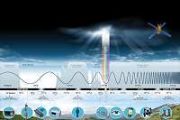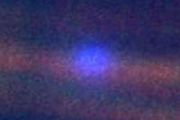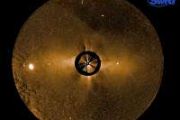The Space Surveillance Telescope program (SST) is DARPA's ground based, advanced, optical system for detection and tracking of faint objects in space such as asteroids. It is also to be employed for space defense missions. The program is designed to advance, or expand, space situational awareness, and be able to quickly provide wide area search capability.
The large curved focal surface array sensors are considered to be an innovative design. It encompasses improvements in detection sensitivity, has short focal length, wide field of view, and improvements in step-and-settle abilities. SST detects, tracks, and can discern small, obscure objects, in deep space with a "wide field of view system". It is a single telescope with the dual abilities. First the telescope is sensitive enough to allow for detection, also, of small, dimly lit objects (low reflectivity). Second it is capable of quickly searching the visible sky. This combination is a difficult achievement in a single telescope design.
Additional Info
- Lead Nation: USA
- Project Website: page on DARPA website
- Project Wikipedia Page: United_States_Space_Surveillance_Network#Space_Surveillance_Telescope_program
Latest from Copernical Team
- NASA's wideband technology demo proves space missions are free to roam
- Euclid’s galaxy garland
- PUNCH mission delivers sweeping new view of solar activity
- Eutelsat Network Solutions to lead global rollout of Intellian OW7MP manpack SATCOM terminal
- Globalstar Skydio trial validates Band n53 for public safety drone links
- Europa Clipper spectrograph tracks interstellar comet 3I ATLAS
- NASA Langley begins plume surface interaction tests to support future lunar landings
- Leonardo DRS space radio completes first secure on orbit data transport test
- Search for life should be top science priority for first human landing on Mars report says
- Smart modeling framework targets 6G spectrum chaos in space air and ground networks













































